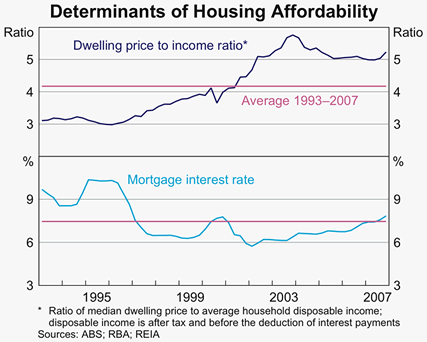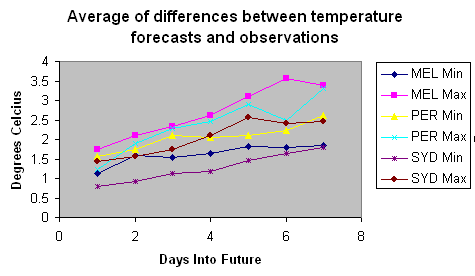 Now the Games of the XXX Olympiad (that’s London 2012 Olympics for us mere mortals) have come to a close, there will be much hand-wringing, soul-searching and other colourful metaphors used within the offices of the Australian Olympic Committee. The AOC forecast fifteen Gold Medals for Australia at this Olympics, not quite the seven we actually received, and at times we ranked on the Gold Medal Tally behind well-known Olympic super-powers like Cuba and New Zealand (g’day neighbours!). This is not to say that our athletes didn’t perform well, that it’s only about bringing home The Gold, or that I could somehow qualify for more than sweat-wiping duty of athletes at the games. However, the AOC is all about exchanging cash for gold and they will now be looking for more cash given that there will be a demand for more gold.
Now the Games of the XXX Olympiad (that’s London 2012 Olympics for us mere mortals) have come to a close, there will be much hand-wringing, soul-searching and other colourful metaphors used within the offices of the Australian Olympic Committee. The AOC forecast fifteen Gold Medals for Australia at this Olympics, not quite the seven we actually received, and at times we ranked on the Gold Medal Tally behind well-known Olympic super-powers like Cuba and New Zealand (g’day neighbours!). This is not to say that our athletes didn’t perform well, that it’s only about bringing home The Gold, or that I could somehow qualify for more than sweat-wiping duty of athletes at the games. However, the AOC is all about exchanging cash for gold and they will now be looking for more cash given that there will be a demand for more gold.
In some ways, it’s an Australian success story. The Australian Institute of Sport was established in 1980, four years after our zero-gold result at the Montreal Olympics. In the years that followed, Australia averaged more than nine gold per Summer games (including London 2012). What is sometimes overlooked is that this has been a scientific triumph as much as a sporting one. While it is the athletes standing on the podium receiving the medals for all to see, it would be justified to also see up there the army of sports scientists and specialists in sports medicine standing there that Australia has willed into being to create our international success. It is probably the Australian scientific organisation with the most influence on the international scene in recent years, but it’s disguised as sport to keep the masses happy. Thanks to the AIS, a country of around 20 million people was able to rank fourth at the Olympics as recently as 2004.
But eventually the limitations of our population size and ability to fund elite sport was going to catch up with us. We had a temporary advantage due to the skills and knowledge in the AIS and the system around it, but information wants to be free. Australian coaches, scientists and even athletes are now helping out other nations. Even Australia’s first individual gold medalist at the London 2012 games, Tom Slingsby, wasted little time after the games to head to the US to help the team defend their America’s Cup title. This is not a slight on the patriotism of those individuals, but recognition that information advantages last for only so long. We now need to find another approach to win a disproportionate share of the Olympic gold.
Our new competitive advantage could be our women. While women made up 46% of the Australian team, wins in their sports accounted for 57% of our Olympic medals (note also that only 46% of the opportunities for a medal are eligible to women). Our first gold medal of these games was from women, and it stood as the only one for nine days. However, while wins in women’s events were responsible for 57% of the medals, they were responsible for only 43% of the gold. Something is not quite right.
Even before the games started, there was some contention that Australia’s female athletes were treated differently from the male athletes. Media reports revealed our women’s basketball team flew to London in economy class while the men’s team flew business. This may be just be the rumblings of a couple of disgruntled athletes, but let’s see if there are some stats that could shine some light on a systemic difference between the men’s and women’s performance at the games.
Despite winning more medals, our team’s women’s medals converted to gold less often than the men’s medals in London. Just 15% of the women’s medals were gold, while 27% of the men’s medals were gold. This difference of 12% between their ability to convert medals to gold, despite coming from the same country, being selected by the same process, and being supported by the same institutions, turns out to be pretty poor compared with other nations. The following table compares all countries who won at least a dozen medals (just so we can have some level of statistical validity):
| Rank | Country | Womens Gold | Mens Gold | Womens Medals | Mens Medals | Womens Conversion | Mens Conversion | Delta |
|---|---|---|---|---|---|---|---|---|
| 1 | BLR | 1 | 2 | 9 | 4 | 11% | 50% | 39% |
| 2 | IRI | 0 | 4 | 0 | 12 | 0% | 33% | 33% |
| 3 | JAM | 1 | 3 | 5 | 7 | 20% | 43% | 23% |
| 4 | UKR | 2 | 4 | 10 | 10 | 20% | 40% | 20% |
| 5 | AUS | 3 | 4 | 20 | 15 | 15% | 27% | 12% |
| 6 | FRA | 4 | 7 | 15 | 19 | 27% | 37% | 10% |
| 7 | CHN | 21 | 18 | 52 | 38 | 40% | 47% | 7% |
| 8 | GER | 4 | 9 | 17 | 31 | 24% | 29% | 6% |
| 9 | RUS | 12 | 12 | 44 | 38 | 27% | 32% | 4% |
| 10 | CUB | 1 | 4 | 3 | 11 | 33% | 36% | 3% |
| 11 | ESP | 2 | 1 | 11 | 6 | 18% | 17% | -2% |
| 12 | GBR | 12 | 20 | 26 | 45 | 46% | 44% | -2% |
| 13 | NED | 4 | 2 | 15 | 9 | 27% | 22% | -4% |
| 14 | HUN | 3 | 5 | 6 | 11 | 50% | 45% | -5% |
| 15 | JPN | 4 | 3 | 17 | 21 | 24% | 14% | -9% |
| 16 | CAN | 1 | 0 | 9 | 9 | 11% | 0% | -11% |
| 17 | USA | 29 | 17 | 59 | 46 | 49% | 37% | -12% |
| 18 | NZL | 3 | 3 | 6 | 8 | 50% | 38% | -13% |
| 19 | ITA | 3 | 5 | 8 | 20 | 38% | 25% | -13% |
| 20 | KAZ | 4 | 3 | 6 | 7 | 67% | 43% | -24% |
| 21 | BRA | 2 | 1 | 6 | 11 | 33% | 9% | -24% |
| 22 | KOR | 5 | 8 | 7 | 21 | 71% | 38% | -33% |
Australia comes 5th worst, out of 22 countries, right behind Belarus, Iran, Jamaica and Ukraine. Not exactly the company we’d chose to validate our support for women athletes.
If Australia had lifted women’s events conversion to parity with men’s events, we would’ve gotten another two gold on top of our other seven, and we would’ve ranked eighth rather than tenth. So, if the AOC is looking for somewhere to spend to increase our performance in the face of the declining benefits of our leading science, I suggest ploughing money into women’s sport.
NB. For the purposes of the above analysis, I’ve looked at whether sports events are male-only events (like Men’s Marathon), female-only events (like Rhythmic Gynamistics) or support both (like Equestrian or Mixed Doubles in Tennis). When determining if an event is a women’s event, I’ve included the two latter categories, and similarly men’s events include the first and last category.
For those that are interested, my analysis spreadsheet is also available. A more thorough analysis would look at previous summer and winter Olympics to see if this was just a one-off, but I leave that as an exercise for the interested reader.






